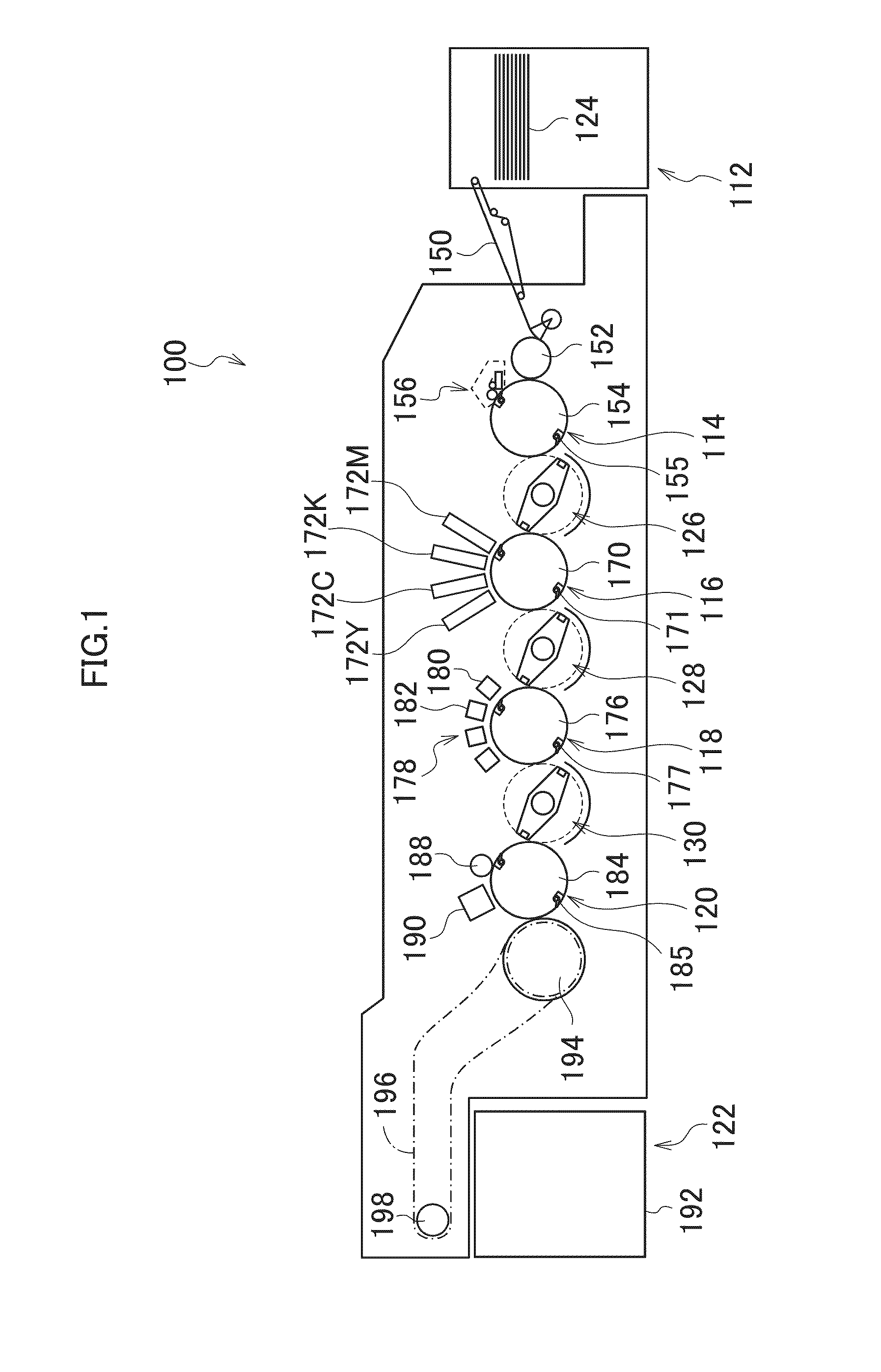Inkjet recording apparatus and method
- Summary
- Abstract
- Description
- Claims
- Application Information
AI Technical Summary
Benefits of technology
Problems solved by technology
Method used
Image
Examples
examples
[0372]The present invention is described in more specific terms below with reference to practical examples, but the present invention is not limited to these examples.
experiment 1
ased on Arrangement of Holes in Suction Surface of Drying Drum
[0373]A solid image was formed by the inkjet recording apparatus shown in FIG. 1, and the occurrence of depression at the suction holes, the image strength in the region of the holes, and the occurrence of cockling were confirmed in the samples thus formed. The experiment was carried out using the conditions shown in FIG. 22 for the opening ratio, the suction hole diameter and the interval between the suction holes in the suction sheets having the thickness of 0.4 mm. In examples where the opening ratio was changed between the central portion and the end portions, the average suction hole diameter was 0.8 mm, and the average interval between the suction holes was 0.8 mm. The shape of the edge portions of the suction holes employed the shape shown in FIG. 21A. The suction pressure was 40 kPa. The recording medium used was OK Top Coat 104 gsm of half Kiku size (636×469 mm). In the practical examples, the recording medium wa...
experiment 2
f Suction Depression According to the Basis Weight (Rigidity) of the Recording Medium
[0392]A solid image was formed on recording media of three types by the inkjet recording apparatus shown in FIG. 1, and the suction depression in the image portion was evaluated. The suction sheet had a uniform thickness of 0.4 mm and the interval between the suction holes of 0.8 mm, and the suction hole diameter was changed in the range of 0.2 to 2.0 mm in such a manner that the opening ratio decreased in a stepwise fashion in each region as shown in FIG. 10B or 10C. The opening ratios in FIG. 23 are the opening ratios in the respective regions. The ink droplet ejection volume was 5 pl. The shape of the edge portions of the suction holes employed the shape shown in FIG. 21A. The suction pressure was 40 kPa.
[0393]As shown in FIG. 23, in the case of the recording medium having high rigidity, suction depression was not liable to occur even if the diameter of the suction holes was large. Hence, it is d...
PUM
 Login to View More
Login to View More Abstract
Description
Claims
Application Information
 Login to View More
Login to View More - R&D
- Intellectual Property
- Life Sciences
- Materials
- Tech Scout
- Unparalleled Data Quality
- Higher Quality Content
- 60% Fewer Hallucinations
Browse by: Latest US Patents, China's latest patents, Technical Efficacy Thesaurus, Application Domain, Technology Topic, Popular Technical Reports.
© 2025 PatSnap. All rights reserved.Legal|Privacy policy|Modern Slavery Act Transparency Statement|Sitemap|About US| Contact US: help@patsnap.com



